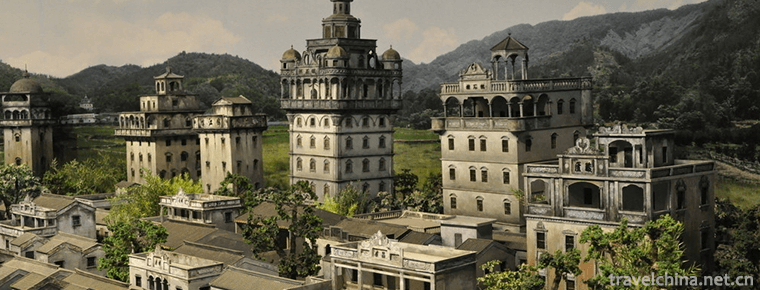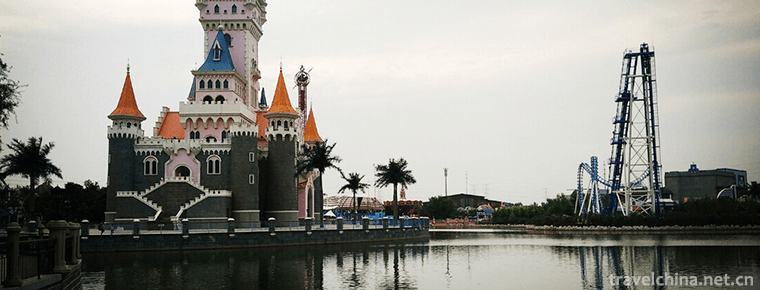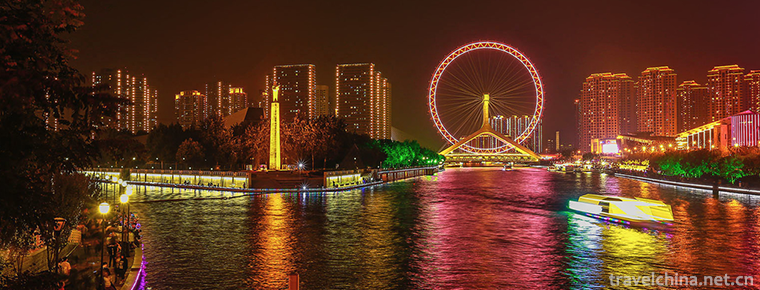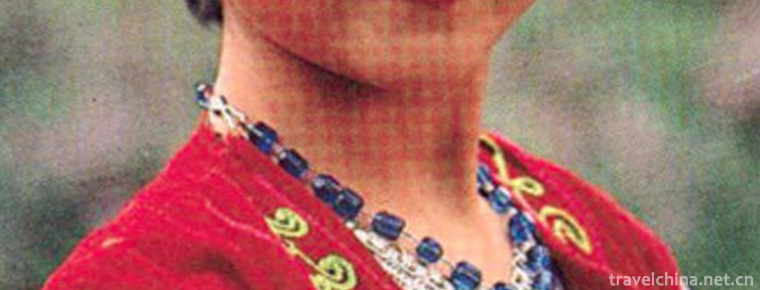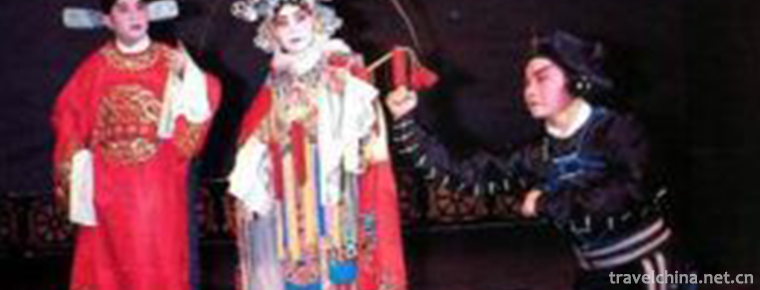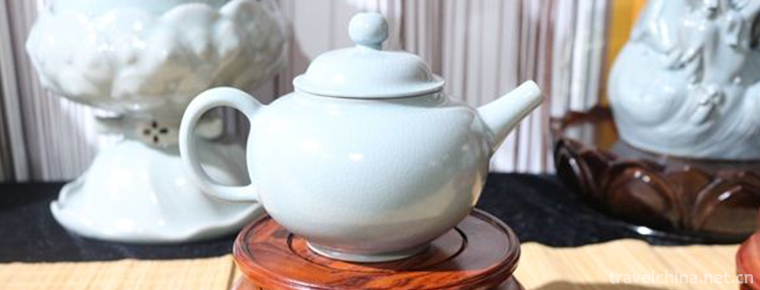Yunnan Mengzi Crossing Bridge Rice noodles guo qiao mi xian
Yunnan Mengzi Crossing Bridge Rice noodles guo qiao mi xian
"Crossing bridge rice noodles" is a unique food in southern Yunnan. It originated in Mengzi City, Hani and Yi Autonomous Prefecture of Honghe. It has a history of more than 100 years. It was spread to Kunming more than 50 years ago. This kind of food is a combination of main and auxiliary food, and is deeply loved by the people of all ethnic groups. Yunnan's "Qiaomi noodles" are the national classic snacks with unique characteristics. The products are famous in Shenzhou. They take into account both north and South flavors comprehensively. They are popular all the year round. They are delicious and refreshing. They have always been the trusted snacks in consumers'minds.
Hot and sour characteristics are suitable for all ages, appetizing and appetizing, four seasons edible, Qi, blood, nourishing, because of the health delicacy is loved by the public. The cross-bridge rice noodles are made of high-quality rice through scientific formulation, supplemented by fresh buckwheat vegetable seasoning ingredients with special appetite. The taste is mellow, the entrance is spicy and crisp, and the aftertaste is long.
In 2014, the production techniques of Mengzi cross-bridge rice noodles were selected into the fourth batch of national intangible cultural heritage list.
Historical Origin
Legend I
It has a history of more than one hundred years. Legend has it that in the Qing Dynasty, there was a small island in the middle of a lake outside Mengzi City in southern Yunnan. A scholar went to study on the island. A scholar, a wise and industrious woman often got his favorite rice noodles to serve him. But when she went out to the island, the rice noodles were no longer hot. Later, when she accidentally delivered chicken soup, Xiu Cainiang found that the chicken soup covered with thick layer of chicken oil was like a pot cover, which could keep the soup warm. If the seasoning and rice noodles were eaten again, it would be more refreshing. So she first cooked the chicken, tubular bone and other clear soup, covered with thick chicken oil; rice noodles were hot at home, and many ingredients were sliced thin to the island and then scalded with boiling oil, then added rice noodles, fresh and smooth. Once this method was spread, people followed it one after another, because to go to the island to cross a bridge, as well as to commemorate this good wife, later generations called it "bridging rice noodles".
Legend II
Another saying is that the old Nanhu Lake in Mengzi City is a beautiful place where literary and ink writers often study books and read poems. Yang Xiucai often went to study in Huxin Pavilion, where his wife sent every meal. Scholars study hard, often forget to eat, and often eat cold meals and cold dishes, the body is becoming increasingly exhausted. His wife was anxious and distressed. She killed the hen and cooked it in a casserole and sent it to him. When she went to collect the bowls and chopsticks again, she saw that the food had not been moved, and her husband was still sitting around reading. When she took the casserole, she found it was still hot. She uncovered the lid. The soup was covered with a layer of chicken oil, and the pottery dishes did not heat well. She sealed the heat in the soup. Later, his wife used this method to keep warm, and put some rice noodles, vegetables and meat slices in hot chicken soup to be boiled and fed to her husband while they were hot. Later, many people imitated her innovative cooking. The rice noodles cooked were really delicious. Because Yang Xiucai had to pass a small bridge from home to Huxinting Pavilion, people called it "cross-bridge rice noodles".
Inheritance and Development
There are 6705 standards for a bowl of rice noodles crossing bridges.
Since 2005, Mengzi City has begun to declare the rice-line crossing the bridge as non-relics. Since then, Mengzi City began to collect information about the traditional production techniques and culture of cross-bridge rice noodles. Until now, legends about cross-bridge rice noodles, traditional production techniques of rice noodles, soup production techniques and the most traditional eating methods of cross-bridge rice noodles can only exist in the form of words.
In December 2009, the geographical indication certification trademark of Mengzi Cross-Bridge Rice Line was officially approved by the State Administration for Industry and Commerce, and Mengzi Cross-Bridge Rice Line obtained a "amulet". After applying for the certificate of geographical indications, standardizing the production standard of rice noodles, standardizing the tableware and service quality of catering enterprises, and enhancing the brand awareness will be more conducive to the development of the 300-year-old cross-bridge rice noodles industry in Mengzi.
In 2011, the Standardization Conference of Yunnan Province was held in Mengzi. The "Standards for Crossing Bridges" formulated by many rice-thread enterprises was issued. There were 6705 standards for a bowl of Crossing Bridges. How much oil should be put into a bowl of rice noodles crossing bridges, what meat should be added, what soup should be used and how many onions should be put in it are clearly stipulated.
Ingredients and practices
Raw material 1. Rice noodles
2. Vegetable cabbage, green bean sprouts, Auricularia auricula, Flammulina velutipes and Pleurotus ostreatus-
Shepherd's purse, chicken balls, fish balls, crab sticks, osmanthus sausage, ham, beef, spareribs, -.
3. Fresh soup, spicy sauce, sesame oil, spicy chicken, salty salt, fresh spices, coriander and scallion
1. Production of Soup
Ingredients: A 25,000 g clear water, 2,000 g old hen, 5,000 g stick bone, 35 g B licorice, 10 g fragrant leaves, 20 g cinnamon, 10 g orange peel, 10 g ginger slices, 5 g big material, 5 g pepper, 15 g white pepper. C. 200 grams of ice sugar, 1000 grams of salt, 25 grams of monosodium glutamate, 500 grams of carved wine, 50 grams of white soy sauce and 10 grams of Yao Zhu.
Production: Old hen, stick and bone together into the cold water pot, boil and skim off the floating powder. Remove and put into stainless steel barrel, add water and fire to boil, then boil for 3 hours on a small fire. Remove the raw materials and leave the soup. 2) Cover material B with gauze and wash it in a clean water basin. After boiling the pot, add material C to the boiling pot.
2. Formulation and practice of sauce:
Formula: 100g bean paste, 100g peanut butter, 200g sweet paste, 1 spoon oyster oil, a little pepper, ice sugar, ginger, garlic, onion, 30g dry chili chopped, vegetable oil, vinegar.
Method: Chop the bean flaps into roses and mix them with peanut butter, sweet paste, oyster oil, pepper, ice sugar and vinegar in a bowl. Hot pot, pour oil, more oil, hot oil, first ginger powder, garlic powder, onion powder, chili powder fried fragrance, and then the mixture into the pot, and then the small hot pot shovel slowly evenly.
3. Sesame oil formula:
Ingredients: 500 grams of peanut oil and 175 grams of pepper.
Heat up the pan, add 500 grams of peanut oil, cook until 80% hot, add 175 grams of pepper, deep-fry until black, and soak the oil into the seasoning pot.
Zanthoxylum bungeanum oil plus prescription:
Seasoning pepper 25g, onion 25g, ginger 25g, peanut oil 100g, fragrant oil 50g.
4. Oily spicy pepper
Ingredients: 20 dried peppers, 1/4 spoon of salt, 10 ML of water, 5 anise, 1 spoon of pepper, 4 segments of cinnamon twig, a little nutmeg and 1 small tree of fragrant leaves.
Method 1. Soak spices and prepare chillies. Pour all the spices into the water and soak for 30 minutes. Dry chili peppers are washed and dried, cut, remove mildew, and cut into pieces with scissors.
Production steps:
1. Place 5 grams of salted salt, 10 grams of chicken essence and 10 grams of fresh spices in a casserole.
2. Bring fresh broth to a boil
3. Put in shepherd's purse first. Choose to join according to the customers'favorite shepherd's purse.
4. Re-cook rice noodles
5. Cook vegetarian dishes for 2 minutes. Choose vegetarian dishes according to guests'preferences
6. Finally add sauce, coriander and shallot
Taste characteristics
Yunnan Mengzi cross-bridge rice noodles are Yunnan's special food. Cross-bridge rice noodles are rice noodles, soup, etc.
Ingredients are made separately, now eat the ready-mixed cooking form, fragrant but not greasy, spicy and crisp, mellow flavor, spicy and refreshing, spicy but not dry, is the top grade of rice noodles, with exquisite materials, excellent production, unique eating method, unique flavor at home and abroad.

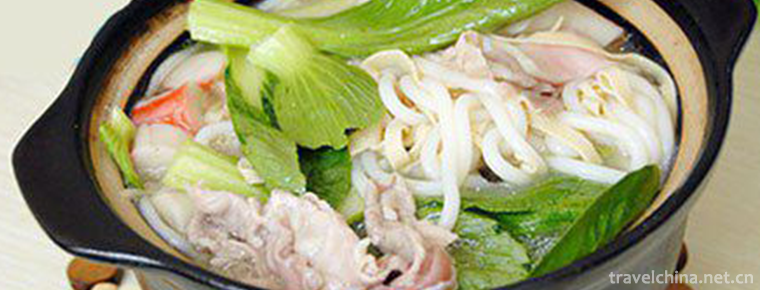
-
Legend of White Snake
Legend of White Snake, local traditional folk literature in Zhenjiang City, Jiangsu Province and Hangzhou City, Zhejiang Province, is one of the national intangible cultural heritage..
Views: 153 Time 2018-12-15 -
Kaiping Diaolou and Villages
In Kaiping city, there are many blockhouses, towns and countryside. There are more than a dozen villages and less than two or three villages. From Shuikou to Lily.
Views: 84 Time 2019-01-29 -
Fangte Fantasy Kingdom Scenic Spot in Qingdao City
Fangte Fantasy Kingdom of Qingdao is located in Lannan Road, Hongdao Street, Hongdao Hi-tech Zone, Qingdao City, Shandong Province. It is the core high-tech cultural amusement .
Views: 176 Time 2019-02-07 -
Eyes of Tianjin
Tianjin Eye, full name Tianjin Yongle Bridge Tientsin Eye, crossing the Haihe River connecting Hebei and Hongqiao District, is a cross-river construction, bridge wheel in one Ferris wheel, both touris.
Views: 128 Time 2019-02-21 -
Kazakh Costume
Kazakh people are characterized by pastoral nomadic culture. Their clothes are easy to ride. Their national clothes are mostly made of sheep's skin, fox's skin, deer's skin and wolf's skin, reflecting.
Views: 213 Time 2019-05-02 -
Qiyang minor
Qiyang in the north of Yongzhou is a kind of traditional opera widely spread. After a long period of evolution and development, it has formed a traditional folk art form with strong local color,.
Views: 133 Time 2019-06-10 -
Qiang Nationality Year
The Qiang Year is a traditional festival of the Qiang people, also known as the Year of the Youth, which is held on October 1 of the lunar calendar every year. In Maoxian area, there are special regul.
Views: 179 Time 2019-06-10 -
Firing Techniques of Ru Porcelain
On May 23, 2011, the firing technique of Ru Porcelain was approved by the State Council of the People's Republic of China and listed in the third batch of national intangible cultural heritage, the he.
Views: 90 Time 2019-06-11 -
Bengbu University
Bengbu College (Bengbu University) is a state governed country. Ministry of Education The approved one is mainly work oriented, with a coordinated development of engineering, science, management, lite.
Views: 156 Time 2019-11-07 -
Chengdu national beauty and heavenly fragrance Water Park
Chengdu national beauty and heavenly fragrance water park is the world's first and largest standard in Asia. It is also the first water theme park with the most comprehensive facilities in Southwest China..
Views: 147 Time 2020-10-17 -
Climate characteristics of Mianyang
Mianyang City belongs to the humid monsoon climate zone of north subtropical mountain. In 2016, the average temperature was 17.9c, the days of excellent air quality were 279, and the average annual precipitation was 823.3mm. .
Views: 86 Time 2020-12-14 -
Plant resources in Nanchong
There is only one kind of Metasequoia glyptostroboides introduced and cultivated in Nanchong City; there are two kinds of wild protected plants, namely, fragrant fruit tree and narrow leaf pygmy grass, and two kinds of cultivated Ginkgo biloba and Eucommia.
Views: 356 Time 2020-12-17

